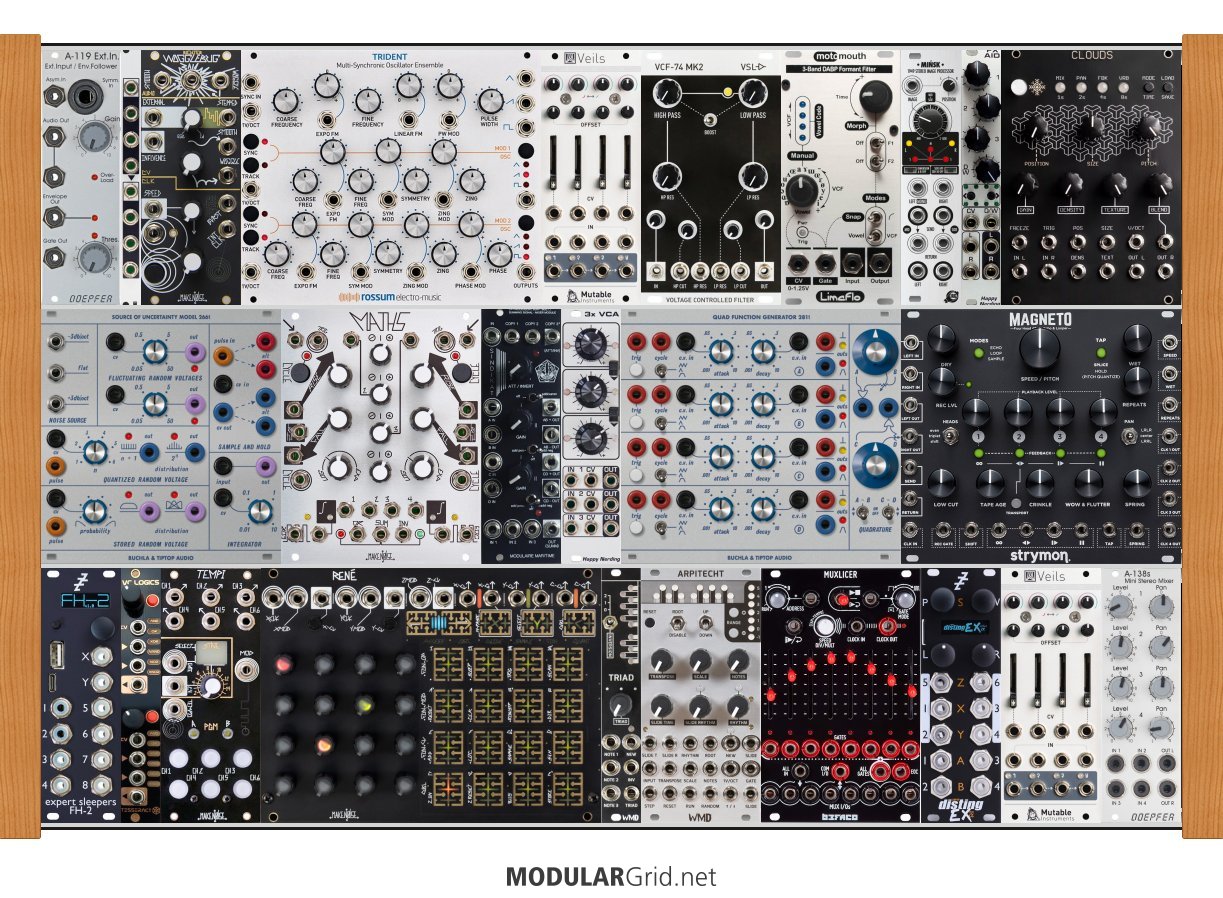Yep, the Tempi + Rene combo has a backplane connection that locks these up as sort of a "hybrid" single module with pretty elaborate clocking tricks. Also notice the dual logic module next to the Tempi, which allows you to majorly screw with how clock pulses get generated and from what. In theory, you could lock the Rene to the Tempi, then use two other clock modifiers to mess with how those interact in the logic gates.
If you don't know about Boolean logic, you'd better! Using Boolean gates to create complex gate patterns is a killer way to get even more out of a system than JUST having a clock. What Boolean logic is are basic operators and how they react to incoming gate signals...
AND only fires a gate when both inputs to a gate are active
OR only fires when there's a gate on one or the other input. These can also be used to combine pulses, which is why you see so many pulse adder-type modules
NOR only fires a gate when there are NO gates at EITHER input
and NAND only fires when both inputs are NOT active, but is on in all other states.
You can also get the "N" via using an inverter on the gate output so that the gate's resulting "high" state converts to zero, and vice versa. But these slightly-confusing Boolean gates kick the door off the hinges when it comes to creating complicated patterns...and all you need are a couple of gates to input. Now, as for the rest of the Pam's trickery, did you look at this?: https://www.expert-sleepers.co.uk/fh2.html You'll note that the FH-2 isn't JUST a MIDI interface, but it ALSO has some sneak functions that kinda overlap with a Pam's. Have a look at that link.
Now, where to start for building...my suggestion would be to start with the top row and then you can work on how to optimally use the synth's voicing. Then the second row, which should be fillable at that point since Tiptop should have some of their Buchla "t" series modules ready. Get used to how the modulation works, and how it works together with the top row's voicing. THEN do the control row on the bottom. By getting used to the primary functions of each row one at a time, when you finally get to the point of implementing MIDI and a controller, you'll be very much up to speed.



